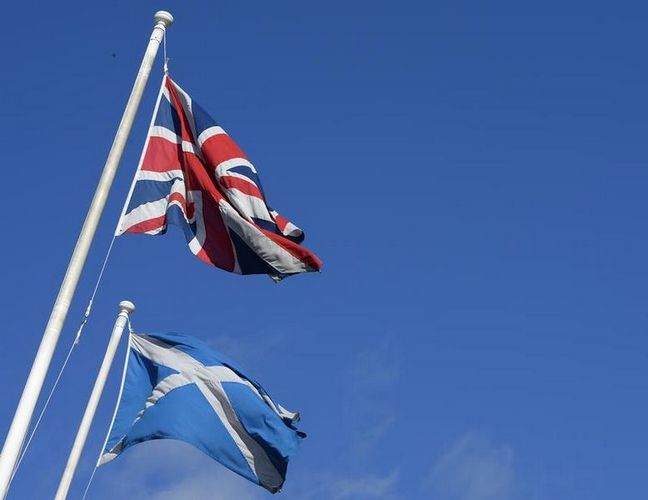History has demonstrated that trading in government bonds is likely to get increasingly volatile if polling continues to show a close-run referendum, while a break-up would leave few palatable options for how the United Kingdom’s £1.4trn of existing debt would be shared with the new northern sovereign.
“If Scotland votes for independence, then this is going to be a big hit for Gilts,” said Dr. Monique Ebell, research fellow at the National Institute of Economic and Social Research (NIESR).
The ‘No’ campaign has a nineteen percentage-point lead, according to the latest YouGov poll. But with its lead shrinking, and around 15% of respondents still undecided, Scotland’s secession is no longer the ideological fantasy it once was.
The market for UK government bonds – or so-called Gilt-edged securities – has remained relatively sanguine, however, trading principally on UK economic growth data and the prospect of rising interest rates.
“This may be a dangerous approach to take,” said one portfolio manager at a large European asset manager.
“It is almost the reverse approach, where people are saying the market is not reacting, so maybe it doesn’t matter.”
Others pointedly refuse to broach the subject of Scottish secession. Of 10 major Gilt investors approached for comment on the subject, all declined. A spokesperson for one replied: “It is a very politically loaded question and not something we would wish to venture into or be seen to be taking sides on, as we are concerned that it could upset our Scottish clients.”
History lesson
The potential downside risks for their multi-million pound Gilt positions are there in plain sight.
Academic research from the close-run 1995 referendum on Quebec independence proved that the increasing probability of its sovereignty not only widened the spread between Quebec bonds and those of Canada in the run-up to the vote, but also saw a decrease in the relative value of Canadian government bonds.
The Quebec referendum ended in a slim victory for the ‘No’ campaigners, but if Scotland’s vote swings the other way, the hit on UK government bonds could be even more sustained.
It is not surprising, therefore, that private wealth investors are eager to know who would be responsible for repaying the capital value of their Gilt holdings and how that will affect the risks placed on them.
“This is an issue that is coming up frequently in our conversations with our clients, and it will become more and more pressing as we approach the referendum,” said Haig Bathgate, the chief investment officer of Edinburgh-based Turcan Connell Asset Management, which manages over £1bn of funds for high net-worth individuals.
“It is surprising the market is not reacting at all,” he added.
Misplaced confidence
The UK parliament stated in March that it would continue to honour all Gilt securities in the event of a split, passing the buck back to Scotland to explain to voters how it would assume and honour its share of the liabilities.
“The terms on existing UK debt could not simply be altered to allow some to be owed by Scotland. This would constitute a meaningful change in contractual terms and would be a default,” read the report on the ‘Economic implications for the United Kingdom of Scottish Independence’.
The Scottish government agreed that a transfer of debt would not be possible, as stated in its White Paper on independence published last month, and envisaged a scenario whereby an independent Scotland would pay its share of the ‘servicing costs’ of UK debt.
The paper says that this “will provide continuity and certainty for lenders and keep borrowing costs down for both governments”.
This assumption is misplaced on both counts, however, argues the NIESR. In its research paper on the matter, it laid out two scenarios under which this debt-sharing could work, both of which would raise significant questions over the creditworthiness of the UK.
First, both countries have to agree on how debt will be apportioned, and this will be thrashed out in the negotiations between the referendum and the proposed date for independence on March 24 2016.
Assuming, however, they reach an agreement where Scotland is accountable for its share of outstanding UK debt on a per capita basis – as was the case when the Czechs and Slovaks split in 1993 – an independent Scotland would owe roughly 10% of the total debt stock, or £109bn on a maturity-weighted basis, according to the NIESR.
In the NIESR’s first scenario, called the ‘clean-break’ option, Scotland would make a cash payment of that amount to the remaining UK government between 2016 and 2017.
In its second scenario, called the ‘IoU’ option, Scotland would pay its share of interest and principal when Gilt payments fall due.
In both cases, however, there is a risk that Scotland will not be able/not choose to pay its obligations. The only difference is the second scenario draws this out over a longer period of time.
Not only would the UK have a higher debt-to-GDP ratio than at present, but it would also have a claim on another independent state - the viability of which, by its own measure, is uncertain.
This claim will undoubtedly attract the attention of ratings agencies, and investors will have good cause for concern.
“If there is an extra risk to the UK government, then this will add risk to Gilts that will certainly be reflected in the price,” said Ebell at the NIESR.
